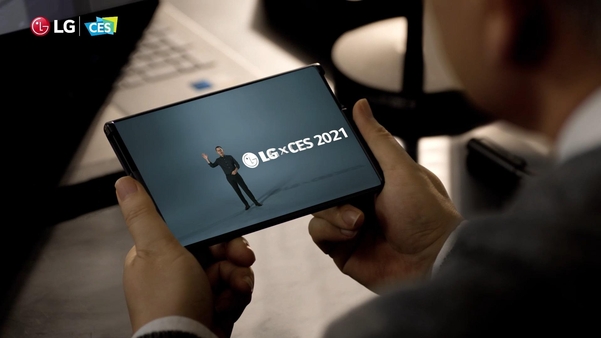Input 2021.01.20 15:24 | Revision 2021.01.20 15:31
Cost reduction dimension… About 20% more expensive LGD panels
LG Electronics requests LGD to extend LCD panel production due to supply and demand problems
LCD expansion leads to OLED stagnation and LGD has a’dilemma’

According to the electronics industry on the 20th, LG Electronics will adopt Chinese BOE’s OLED panel for’LG Rollable’, a smartphone that attracted attention by being introduced at last CES. The LG Rollable, which is scheduled to be released in the first half of the year, can expand the 6.8-inch screen to 7.4 inches. This is thanks to the adoption of a flexible OLED display that can bend or roll the screen.
It is known that LG Electronics uses BOE’s instead of LG Display panels to secure price competitiveness. OLED prices are relatively more expensive than competitors. The industry estimates that the price of LG Display OLED panels is around $100 and BOE is between $70 and $80 based on Apple delivery.
The mobile communication (MC) division in charge of LG Electronics’ smartphones has not been making profits for six years. For this reason, it is necessary to maximize profits through LG rollables, and eventually, it seems that the BOE panel, which is cheaper in price, is more advantageous for cost reduction.
LG Electronics’ first OLED monitor’Ultrafine All Red Pro’ uses Japanese JOLED’s OLED panel. JOLED was founded by Sony and Panasonic in 2015 and was acquired by Japan Display the following year. Last year, it received an investment of 230 billion won from CSOT, a display subsidiary of Chinese TV maker TCL. It is currently focusing on the medium-sized OLED market, and plans to enter the large panel market in the future.

An industry insider said, “LG Display supplies small OLED panels to the iPhone 12 series, etc., but Samsung Display has a higher proportion of installation.” It is forming a competitive landscape.”
In the midst of this, LG Electronics is known to have recently requested an urgent request from LG Display to extend the production of LCD panels for TVs. Although demand for LCD panels increased, it was due to the fact that major panel suppliers, HKC and Sakai SIO in China, did not receive as much as they wanted. With the addition of LG Electronics’ new mini LED TV (QNED), panel demand is increasing.
However, the expansion of mini LED TVs (TVs that use’mini LED’, which is smaller than conventional LEDs for LCD TV backlights), is likely to lead to stagnation of OLED TVs. It is said that it is a considerable burden for LG Display, whose task is to convert OLED. This is why LG Display recently emphasized the superiority of OLED panels compared to mini LEDs at CES.

